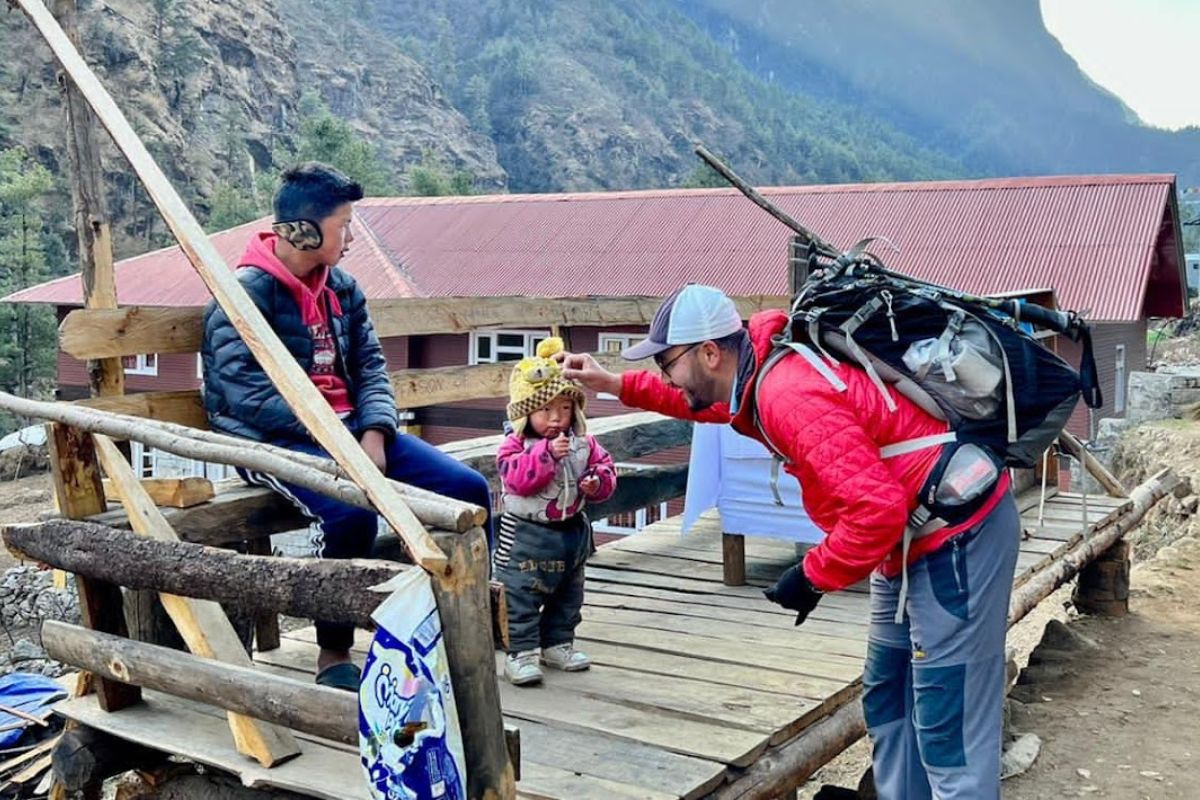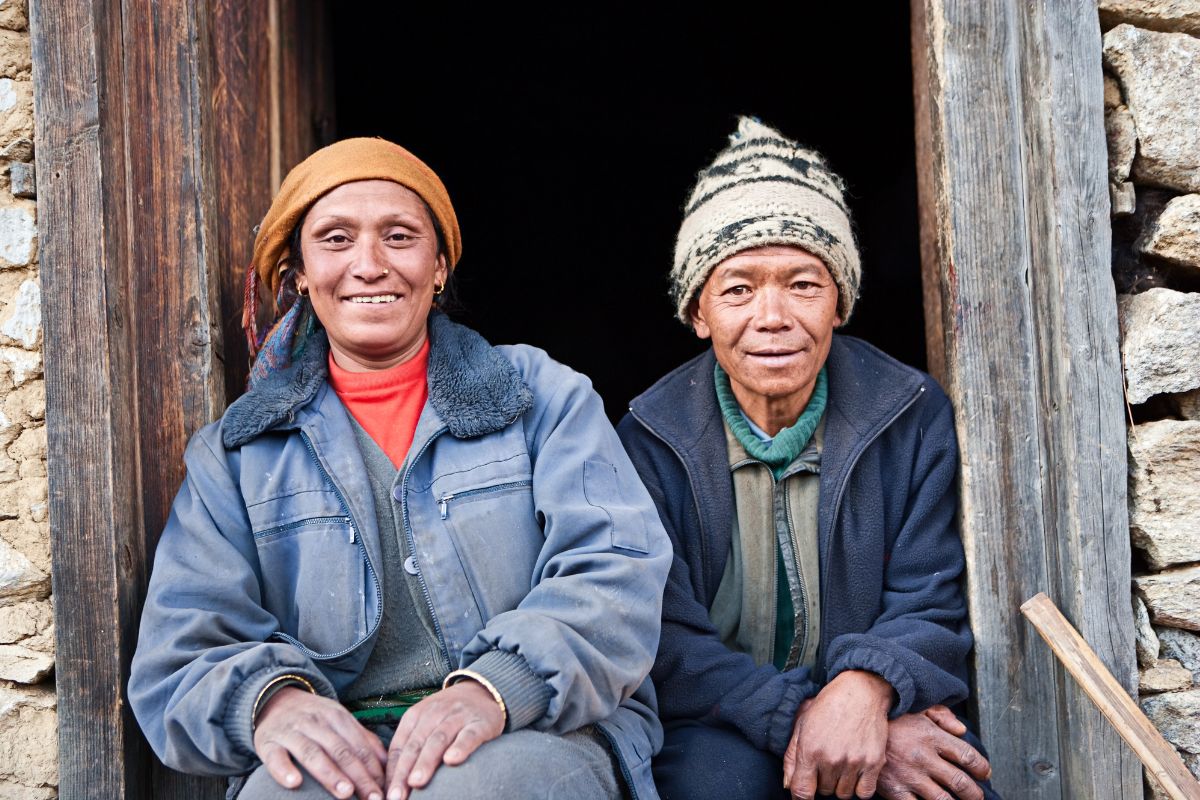
Himalayan languages: Lingual Diversity of the Himalayas

Himalayan languages: Lingual Diversity of the Himalayas
swotah travel
11342
23, 12 2022
Imagine if there was only one word for snow. How would you describe a blizzard, a flurry, and a snowstorm? While all three words describe different types of snow, they all share a common root. This is because there are many different types of snow, and the same is true for languages.
Linguists have long been fascinated by the diversity of languages, and this fascination has only grown in recent years with the advent of digital technology. With so many different ways to communicate, the world has become a more colourful and interesting place.
Talking of Nepal the country alone has more than 125 ethnic groups and castes and over 123 languages spoken. With every caste and ethnic group, there comes a specific tradition, culture, festivals, norms, and beliefs. Language is one of the components that falls under the designated categories.
Among hundreds of languages, people of the Himalayas speak several languages, including Sherpa, Tamang, Gurung, and Thakali - they are mostly related to the Tibetan language. Despite the diversity of languages, we also have noticed that they are highly endangered due to the influence of Western societies and the assimilation process.
Now, we're exploring the linguistic diversity of the Himalayas. This vast region is home to dozens of languages, all of which are unique and fascinating in their own way. Join us as we explore these amazing languages and their respective cultures.

Overview of Himalayan Languages
There are dozens of languages spoken in the Himalayas, with Tibetan and Nepali being the most common.
Each language has its own unique history, culture, and set of dialects. This makes exploring the Himalayas an incredibly rewarding experience for linguists and anthropologists alike.
You may be wondering why there is so much linguistic diversity in such a small area. The answer lies in the mountains themselves. The Himalayas are one of the most isolated mountain ranges on Earth, and this has led to the development of numerous distinct cultures and languages.
Classification of Himalayan Languages
There are several classification systems for Himalayan languages. The first, proposed by Brian Houghton Hodgson in 1836, grouped the languages into three families: Tibetan, Karen, and Tamang.
The second classification system, proposed by George van Driem in 1997, is more complex and divides the languages into dozens of families. This system is still being debated and revised.
Under this system, there are four major language groups in the Himalayas: Tibeto-Burman, Sino-Tibetan, Indo-Aryan and Dardic. Each of these groups has several subdivisions. For example, the Tibeto-Burman group includes Tibetan, Ladakhi, Balti, and other languages.

Language Families in the Himalayan Region
The Himalayan region is one of great linguistic diversity. There are around 122 languages spoken in Nepal, and dozens of them prevail in the Himalayas, belonging to eight major language families.
Many of these languages are in danger of dying out. A 2013 study by the Linguistic Society of Nepal found that 60 of these languages were severely endangered, while 32 were critically endangered.
This is largely due to the fact that these languages are spoken by small, isolated communities. There is little to no interchange between different groups, which means that the languages don't evolve and adapt. They also don't have a large enough base to support a written form.
This makes it all the more important to document and study these languages so that we can understand their unique grammatical structures and vocabulary.
Popular Himalayan Languages
You might be surprised to learn that there are a number of popular Himalayan languages. In fact, the Himalayan region is home to some of the most linguistically diverse countries in the world, including Nepal, Bhutan, and India.
Some of the most commonly spoken Himalayan languages include Nepali, Tibetan, Ladakhi, Sherpa, Tamang, and Gurung. However, there are many more languages spoken in the Himalayan region, meaning people are fluent in other linguistics too, including Hindi, Bengali, and Punjabi.
The diversity of Himalayan languages is due to the region's unique history and geography. For centuries, the Himalayas have served as a barrier between India and China, resulting in a unique blend of languages and cultures.
So, if you're ever in the Himalayas, be sure to take some time to explore the linguistic diversity of the region. You might just be surprised by what you find!
Difficulties in Documenting Himalayan Languages
One of the challenges in documenting Himalayan languages is that they are often spoken in remote mountain regions that are hard to access. This means that linguists often have to travel long distances on foot, and sometimes even hire porters or pack animals to carry their equipment.
Another difficulty is that many of the languages are spoken by small communities, which can make finding native speakers willing to participate in research projects difficult. Additionally, some of the languages are on the verge of extinction, with only a few elderly speakers remaining.

Language Preservation in the Himalayas
In the Himalayas, language preservation is essential to maintain the diverse culture of the region. With over 50 different languages spoken in the Himalayan region, there is a wealth of linguistic diversity to explore.
Unfortunately, many of these languages are endangered, with some estimates suggesting that as many as half of all Himalayan languages could disappear within the next few generations. This is due to a variety of factors, including globalization, urbanization, and the increased use of English and other major languages in education and business. As we see, the English language has overtaken every nook and corners of the world and the curriculum of Nepal has made the English language compulsory. Similarly, the current generation in the Himalayas are more leaned towards the Western cultures and society, forgetting about their own culture and languages. While the Himalayan communities are more developed than before, they also have brought changes in their original culture and norms.
Simply, the Himalayas are the main center of assimilation in Nepal. Since it's the main attraction of tourists, local people are likely to learn the culture and languages brought by the foreigners. In the course of time, they have been more adept at English and other languages than their mother tongue. It's the main reason of Himalayan languages are endangered year by year.
To prevent this loss of linguistic and cultural diversity, it is important to support language preservation efforts in the Himalayas. This can be done through initiatives such as documenting endangered languages, developing teaching materials in lesser-known languages, and supporting bilingual education programs. By taking action to preserve Himalayan languages, we can ensure that this unique and vital part of our world's heritage is not lost forever.
Linguistic diversity is quickly diminishing as languages worldwide are disappearing at an alarming rate. It's essential to document and study these languages before they disappear completely.
Conclusion
As you've seen, many different Himalayan languages are spoken in the region. Each one has its own unique history, culture, and dialect. While some of these languages are in danger of disappearing, others are thriving.
The key to preserving linguistic diversity is to learn about and appreciate these languages. By understanding the importance of these languages, we can work to ensure that they continue to be spoken for generations to come.
NEWSLETTER SIGNUP
Sign up to receive our trip ideas and travel offers!
Get updates and Exclusive Offers up to 20% Discount








